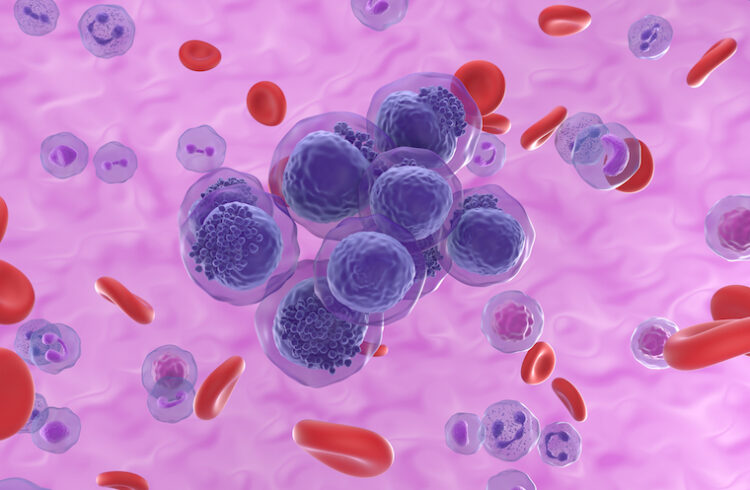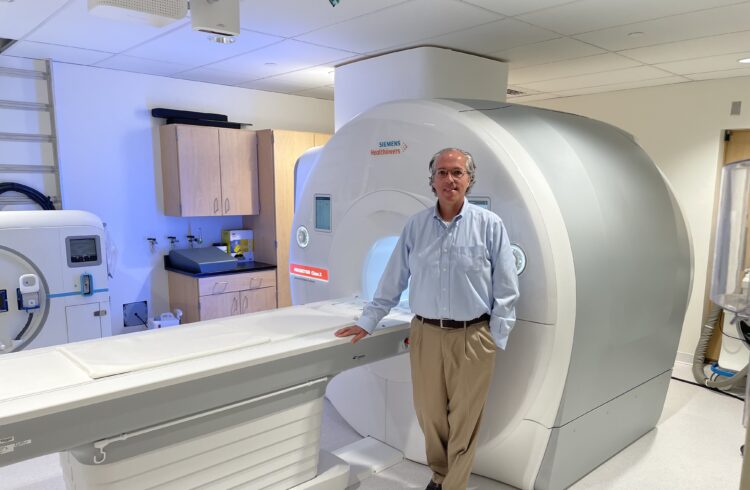
Chongzhi Zang, PhD, is director of computational genomics at UVA Cancer Center and a member of UVA’s Departments of Genome Sciences; Biochemistry and Molecular Genetics; and Biomedical Engineering.
School of Medicine scientists have made surprising discoveries about an important controller of gene activity that could advance efforts to better treat cancer and genetic diseases.
Genes, as we learn in school, serve as the blueprints for building our cells. But genes are not always in use; they are turned on or off as needed, and the blueprints are copied during cell division. These processes are controlled by a complex array of molecular machines, and one of these triggers is called ORC – the origin recognition complex.
Scientists have long believed that ORC’s primary job is to help copy DNA during cell division, acting like a starter switch for DNA replication. But the UVA researchers and their collaborators were shocked to discover that ORC works very differently in human cells than expected.
Even though ORC encompasses six different proteins, the proteins were thought to act together, with all six binding to our genetic material in unison. But the researchers found that the proteins worked with remarkable independence. Using cutting-edge genomics technologies, the scientists identified tens of thousands of sites across our genomes (our collection of genetic material) where one ORC “subunit” bound and others did not. That means each subunit of the complex may have its own unique role by regulating different genes.
“People have long thought that ORC was like a team, always working together at the same places on the genome, like a tight-knit orchestra playing one song together,” said researcher Chongzhi Zang, PhD, Director of Computational Genomics at UVA Cancer Center and a member of UVA’s Departments of Genome Sciences; Biochemistry and Molecular Genetics; and Biomedical Engineering. “But it turns out each instrument can go off the and play a solo in a different room.”
Understanding ORC
Each ORC subunit, it turns out, has its own area of influence, and the different subunits may trigger different effects. The researchers found that some ORC subunits help tightly pack the DNA into compact structures called chromatin, which keeps certain genes turned off – you might think of it like stuffing items into a trunk to store away until needed again. Others help keep chromatin loose and open, allowing genes to stay active.
“Chromatin is how our DNA is folded up to fit inside the cell nucleus,” Zang said. “Whether it is tightly packed or loosely open determines if the genes in that area can be used.”
This process is part of a broader field called epigenetics, which refers to changes in gene activity that happen without altering the actual DNA sequence. Epigenetic regulation is essential for normal development and health, but when it goes wrong, it can lead to diseases like cancer.
Particularly surprising was the discovery that ORC subunits influence where other important proteins, especially those that help shape the 3D structure of the genome, can bind to DNA. This means ORC could be involved in organizing how the entire genome folds and functions, not just copying it.
“This was very different than what we had seen previously in simpler cells,” said Zhangli Su, PhD, assistant professor of genetics at the University of Alabama at Birmingham (UAB), who co-led the study. “We are very intrigued by how human ORC performs this function.”
Those discoveries are just part of a “wealth of information” now available about how ORC regulates gene activity, the researchers note in a new scientific paper outlining their findings. Their work, they note, is the “first detailed study of how and where ORC regulates epigenetics and gene expression in human cells.”
“This discovery fundamentally reshapes how we think about this protein complex,” said Anindya Dutta, MD, PhD, professor and chair of the Department of Genetics at UAB, who also co-led this study. “ORC is not just a DNA replication machine, but individual ORC subunits play key roles in gene control and genome organization.”
The researchers conclude that the “unanticipated scale and breadth” of ORC’s activity open an important new chapter in our understanding of cellular and molecular biology. And by better understanding the factors that control gene activity, doctors and scientists can better understand how things can go wrong and lead to cancer and genetic diseases, and how we might fix it.
“These discoveries were made by integrating state-of-the-art genomics technologies with advanced data science,” Zang said. “Now we want to dive deeper into the data and apply new approaches to study the fundamental mechanisms of ORC subunits. As we have a better understanding of these mechanisms and their roles in disease, we might be able to identify more precise therapeutic targets.”
Findings Published
Zang and his collaborators have published their findings in the scientific journal Cell Reports. The research team was co-led by Dutta, Su, and Zang. Su and UVA graduate student Mengxue Tian served as co-first authors on the publication. The collaborative team also included Etsuko Shibata, Yoshiyuki Shibata, Tianyi Yang, Zhenjia Wang, and Fulai Jin.
The research was supported by the National Institutes of Health, grants R01 CA60499, R35 GM133712 and R00 CA259526. The scientists have no financial interest in the work.
UVA’s Department of Biomedical Engineering is a joint program of the School of Medicine and School of Engineering.
To keep up with the latest medical research news from UVA, subscribe to the Making of Medicine blog.



